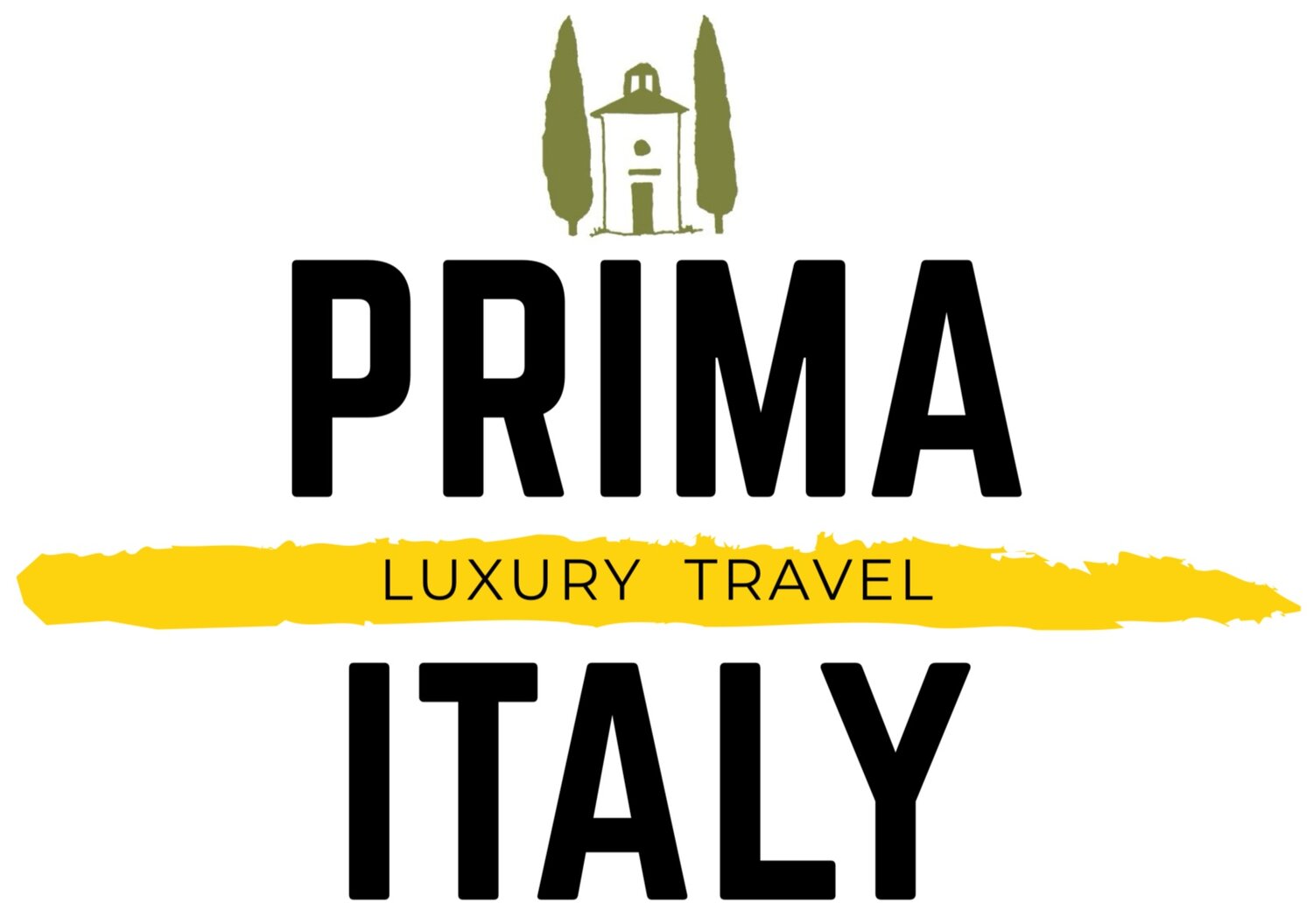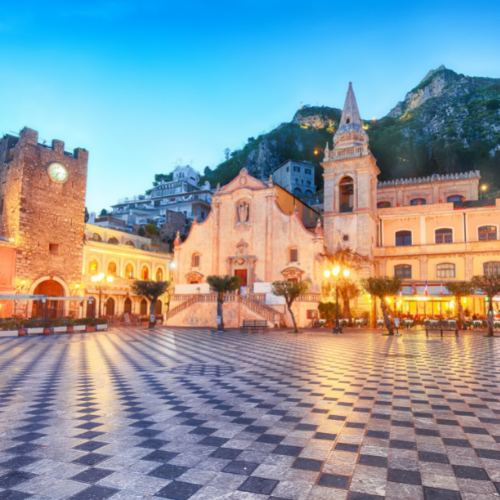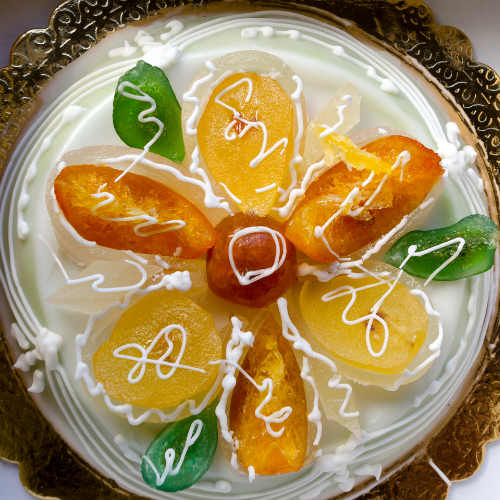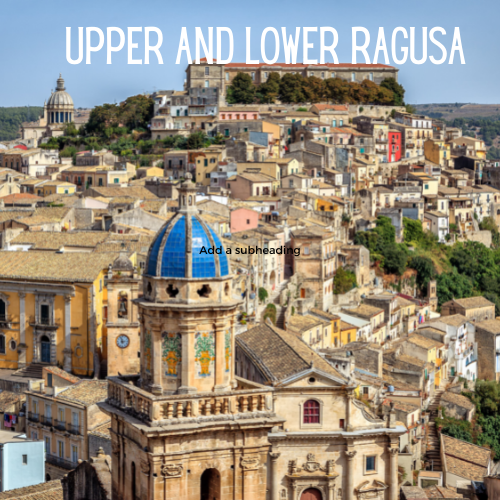Ah, Sicily…large, multi-layered, and endlessly fascinating.
Sicilians consider themselves Sicilian first and Italian second (or maybe not even Italian at all!). You might understand why when you delve deeper into the island’s culture, storied history, and politics.
The island is a fabulous “slow” destination, a place to take small, winding roads exploring Greek ruins, beaches, volcanoes, salt plains, Baroque towns, and more. There are few highways in this region, giving you the perfect excuse to take your time.
I’ll get you started with an eight-day itinerary around Eastern Sicily to get you acquainted with the region.
8 Glorious Days in Eastern Sicily
Days 1-2 - Taormina & Savoca
Time spent exploring Taormina will be full of history and incredible views. Perched on Mount Tauro, you’ll admire the Mediterranean architecture and jump headfirst into ancient history, as Taormina is one of the best examples of Ancient Greek influence on this region.
Taormina is best explored with a knowledgeable local guide. I can help you arrange a fascinating walking tour of the city to learn its historical importance to the Greeks, or perhaps a ceramic-making experience, or even a tour to learn about Taormina’s history in the 1960s as a hideaway for the likes of Elizabeth Taylor and Richard Burton.
With even more time in Taormina, I’d recommend an evening cruise on board a small yacht, with a glass of prosecco and a swim in the Gulf of Giardini Naxos to refresh you.
Alternatively, fish with a local fisherman, who will take you to a local seaside restaurant where your catch will become your dinner—nothing more authentically Sicilian than that, I’d say.
If you’re as much of a fan as I am of Francis Ford Coppola’s Godfather films, hop in a FIAT-500 with a local guide and zip up to Savoca to relive some of the films’ most famous scenes. Visit Bar Vitelli, where Michael Corleone meets his future father-in-law and the church where Michael and Apollonia said, “I do.”
Michael Corleone meets Apollonia’s father here. Bar Vitelli, Savoca - CC Ramón Cutanda López
Day 3 - Mount Etna
You will have seen Mount Etna in the distance from Taormina, but today is your chance to discover it up-close, along with the incredible food and wines that are enriched by the volcanic soil in this area.
An active volcano just calls out for a little adventure, so why not hop aboard a 4x4 Jeep for the ride of your life? If you’re up for it, you can even ride on the back of a mule.
Either way, you’ll journey to the peaks and craters of Europe’s largest active volcano, ascending up to 10,000 feet for unforgettable views.
Choose your path: HIke up Mount Etna’s crater-edge with an expert vulcanologist to discover the area’s geology or descend down the volcano for lunch and wine tastings. Bear in mind, the wine from this region is exquisite and unique, cultivated as it is by the volcanic soil.
If you’re really into your food and wine experiences, you may want to veer off course and head to a gorgeous winery estate for a wine tasting and pasta class, where you’ll prepare a lunch of Etna specialties.
Bronte pistachios are famous around the world and will likely be incorporated into your Etna-inspired sauce. Savor olives, dried tomatoes, cured meats, Sicilian cheeses, roasted chestnuts, and more. To delight your sweet tooth, perhaps some hand-rolled cannoli for dessert?
Save the date if you love pistachios: Bronte holds it’s annual Pistachio Festival every September.
Day 4 - Catania
Nestled between the Ionian Sea and Mount Etna, Catania is a city unlike any other, with a dark, moody feel.
This comes from the fact that it was rebuilt—after a violent eruption in 1669 followed by a devastating earthquake only thirty years later—with black lava and light-colored limestone.
This combination has rendered Catania one of the Mediterranean’s great Baroque cities, a true delight for architecture buffs.
Your first stop in Catania must be to La Pescheria, the city’s daily fish market. You’ll find fish markets all over Italy, but I find the Arab influences on Sicily are most evident at La Pescheria, where fishermen on the ancient port call out their catches in the singsong Sicilian dialect.
You’ll find everything from octopus to swordfish on display, fresh from the sea and butchered to order. Involtini di spada (swordfish rolled in eggplant) is a staple in this part of Sicily.
If you enjoy fresh fish, pull up a chair at one of the restaurants ringing the market for the day’s catch, or let me arrange a cooking class in a historic museum, one of most unique locations you’ll ever find.
Days 5-6 - Siracusa & Ortigia
Siracusa—known as Syracuse in English—rests on the Ionian coast and is a must-visit spot while you’re in Eastern Sicily.
Its archaeological park, Parco Archeologico della Neapolis, a UNESCO site, is of huge historical importance, featuring the Teatro Greco (Greek Theater) which dates back to the 5th century BC and once sat 16,000 spectators.
After you’ve explored the archaeological park, you will want to make time to head to Ortigia, Siracusa’s tiny island. This is the best place to hang out and is the historical heart of the area.
You’ll be dazzled by the Baroque architecture, the castle and palazzi, and the charming feel of the narrow medieval lanes.
A visit to Ortigia will give you a view into 3,000 years’ worth of history, all within this island measuring only a half-mile across and a third of a mile wide.
I particularly recommend a full-day tour of Syracuse to learn the Jewish history of the city. Your local guide will show you Acradina (the earliest Jewish settlement), catacombs, crypts, and more.
After a light Sicilian lunch, head to the Giudecca (the ancient Jewish Quarter), the oldest Jewish ritual bath in Europe, and the Bellomo Gallery, where tombstones from the medieval Jewish cemetery are displayed.
Day 7 - Baroque Noto, Pachino, & Marzamemi
About an hour and a half from Siracusa lies Noto. On the way to this UNESCO town, you’ll drive through rolling hills and Greek ruins, and when you arrive, you will know it.
Noto is immediately distinguishable by its striking architectural cohesion, rendered so by an earthquake in the 1600s that necessitated a total rebuild. Because this happened during the Baroque age, the results were nothing short of magical.
Your local guide for the day will show you around all the best places in Noto. Head to the café of Corrado Assenza to be delighted by his creations of gelatos, jams, and creams. He also makes many of his pastries with almond milk. Delizioso!
Make a quick stop in Pachino. Its first inhabitants came from Greece, but promontorium pachyni was known in Homer and Virgilio’s time.
Pachino is known for its tomatoes, which are crunchier and sweeter than other varietals and well-worth a sample.
Next, head north to the picturesque fishing village of Marzameni for lunch in this magical seaside town. Here, you’ll feel as though you’ve been transported to another era.
The name likely comes from the Arabic Marsà al hamen, meaning “Bay of Turtledoves,” or from the word memi, meaning “small port.”
Explore the Palace of the Prince, the Loggia of Scieri, the tuna fishery, and two baroque churches, and then sit down to lunch in a café in the impossibly charming piazza.
Day 8 - Modica & Ragusa
Today, it’s onto another UNESCO World Heritage Site, Modica. Featuring yet more beautiful Baroque architecture, Modica is called Italy’s “Chocolate City,” and today, you’ll find out why.
The chocolate here is made the way the ancient Aztecs made it in Mexico, using cacao beans with no added cocoa butter or soy lecithin, giving you purer chocolate true to the original intentions of the makers.
During your chocolatey experience, visit a historic chocolate laboratory to discover the traditional flavors of Modica chocolate: vanilla and cinnamon, as well as hot chili pepper.
Access your inner Willy Wonka as you create your very own chocolate bar, which will be your personalized dessert at the end of the class. Your guide will take you to the best shops to sample chocolate delights unlike any you’ve tasted.
As for Ragusa, the town is a marvel. It was completely leveled by an earthquake in the 1600s, along with Noto, Modica and other nearby towns.
Rebuilt completely in Baroque style, the town as divided in two to compromise between those who wanted to rebuild in place along the ridge of the town’s gorge—Ragusa Ibla—and the wealthier residents who wanted to rebuild on a nearby hill—Ragusa Superiore. Two towns were eventually built, but eventually merged into one.
I could easily spend weeks exploring Sicily, and I’d love for you to do the same, but these eight days will give you a fantastic sense of the history, culture, and delicious food and wine scene of this singular region.
Would you like help planning a journey to magical Sicily?
With many hotels offering flexible cancellation policies, you can choose to book for later this summer or even plan ahead to ensure the best availability.
Get in touch to discuss your next trip.














